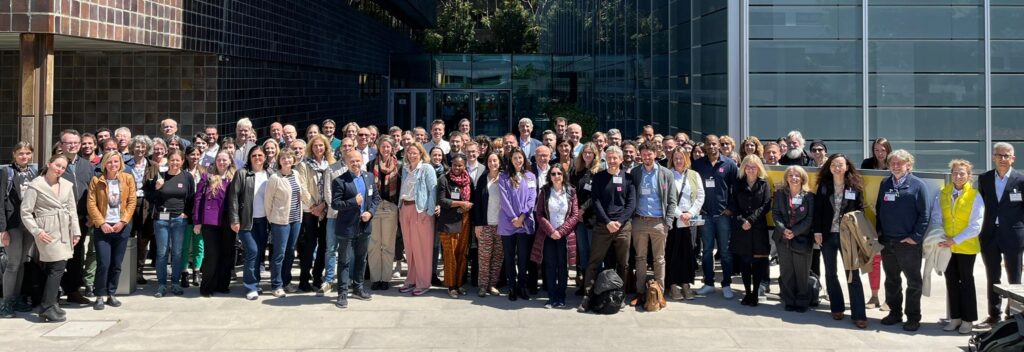About INTERLAYER
Safeguarding Water Availability & Quality
Our PROJECT
About INTERLAYER
The complex INTERlink of safeguarding wAter availabilitY and quality to mitigate and adapt to hydroclimatic extRemes
This project focuses on how water retention technologies can contribute to improve resilience, adaptation and mitigation to hydroclimatic extreme events while increasing water availability and quality by balancing groundwater and surface water management practices. INTERLAYER is studying groundwater and surface water availability and relate it to land use (including specific agricultural practices) and water quality from a synergetic perspective so that available Slow Hydrology techniques are used in future River Basin Management Plans.
To reduce the risk of hydroclimatic extreme events, enhancing river basins’ ability to slow runoff and store water is crucial. This can be achieved through retention techniques that decrease water inflow velocity (Slow Hydrology). Instead of traditional drainage methods that quickly channel water downhill, we should retain precipitation in highlands through terrain modifications and runoff interception, recharging ground storage. This approach, inspired by ancient practices from the Iberian Peninsula and Arabic countries, will increase resilience to flooding and drought while supporting ecological quality.
Interlink between surface water and groundwater management
How Water Retention Measures (WRM) can promote slow hydrology at catchment level
Governance mechanisms that promote rapid uptake of improved technologies
Project Objectives
Develop cumulative adaptation strategies in the complex interlink between surface and groundwater management

European Retention Techniques
Create an inventory of European techniques including WRM (water retention measures), NBS (Nature-Based Solutions) and Bio-engineering that combine additive results in surface water retention promoting slow hydrology and groundwater recharge.
Impact Estimation
Generate an estimate of the impact of retention technologies (slow hydrology) applications on flood and drought risk, water availability, quality, and biodiversity at river basin scale in different edaphoclimatic contexts and settings in different future scenarios.
Knowledge Integration
Integrate local, indigenous, scientific, and technological knowledge in the co-production of resilient retention techniques.
Retention Evidence
Provide evidence for the integration of retention technologies for slow hydrology into adaptation measures to hydroclimatic extreme events in river basin management plans, contributing to safeguarding the availability and quality of the water as well as biodiversity and ecosystem services, in present and future climate.
Retention Toolbox
Deliver a “toolbox” for the successful integration of water retention technologies for slow hydrology to guarantee the availability and quality of the water.
Decision Support System
Deliver a cross-European fit-for-purpose Decision Support System (DSS) tool for the integration of water retention technologies in current and future River Basin Management Plans to ensure resilience towards flooding, droughts, loss of water quality and ecosystem services.
Policy Recommendations
Provide policy recommendations of best practices for water retention for slow hydrology implementation to contribute to watershed restoration through guidelines and workshops.
Replication Plan
Deliver a replication plan of water retention methods for slow hydrology technologies, and monitoring activities at European level.
Results Dissemination
Properly communicate and disseminate the results of INTERLAYER and clustering with other initiatives.
Expected Impact of the Project
01
Inventory of slow hydrology techniques
02
Living labs demonstration
The possibilities of Slow Hydrology techniques in four European settings: Guadiana River Watershed (PT/SP); Vaerebro River (DK); Liesing River (AT); Danube River (RO)
03
Models for analysis of interlinks between surface and groundwater
04
Models for selection of slow hydrology techniques
According to different climate scenarios
05
Policy guidelines and recommendations, business models and roadmap
For Water Retention Measures for Slow Hydrology uptake at European level in River Basin Management Plans and by different stakeholders.
